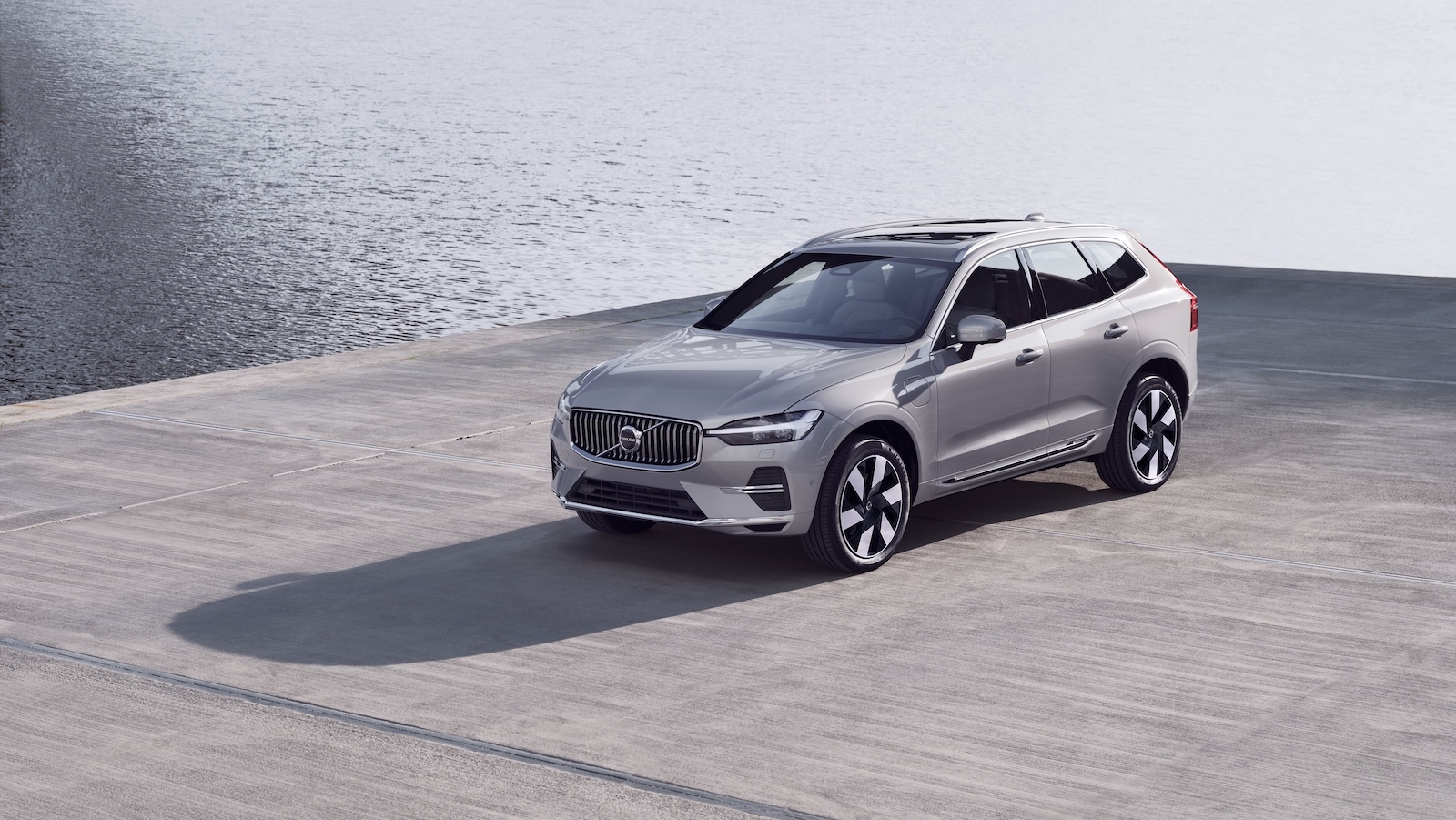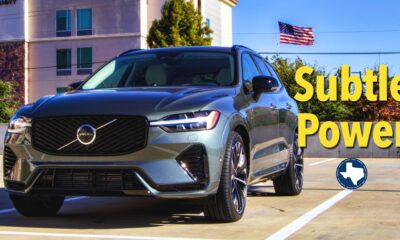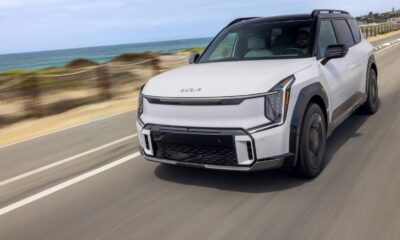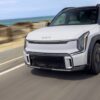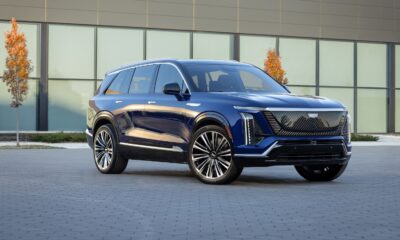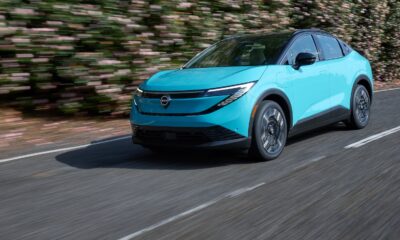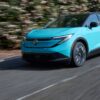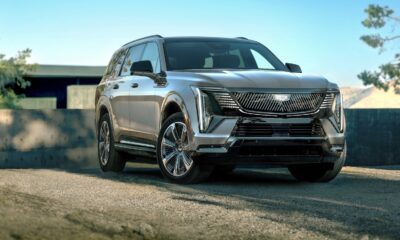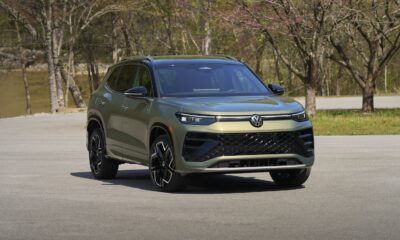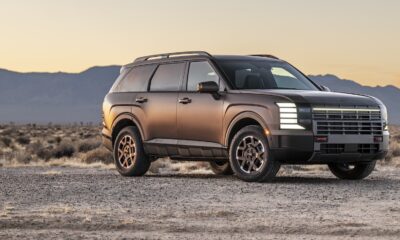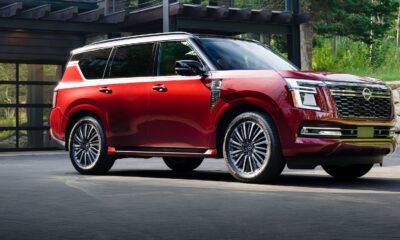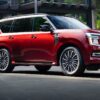Car Reviews
Volvo’s XC60 T8 – PLUGGED IN!
Volvo’s XC60 T8
PLUGGED IN!
My press-loan Volvo XC60 T8, a terrific and fuel-sipping luxury compact SUV, arrived with 2,487 miles on the odometer and its charging cable still in shrink wrap. That told a quiet but damning story: five or more journalists passed judgment on a plug-in hybrid without ever plugging it in.
We are entering an energy transition that may define the century, yet public understanding—and journalistic rigor—lag behind the pace of innovation. The nascent technology is relentlessly dynamic. The American public seems not to understand this. No doubt. My colleagues in the automotive press are enthusiastically proving Pogo’s axiom: We have met the enemy, and he is us.
Of the many forces disrupting Earth’s delicate oxygen-carbon balance—whose “just-right” range only recently, geologically speaking, made human life possible—none is more destructive than transportation. The Creator buried trillions of tons of organic compounds to allow oxygen to occupy the 20% range. Now we pump and dig them up by the megaton and light them on fire. Doing so accelerates the earth’s delicate oxygen-carbon dioxide cycle by orders of magnitude that accelerates the cycle by billions of times beyond natural rates.
In a few years, we will power our vehicles with electricity—not because we’ve grown wiser, nor because Genesis calls us to steward this astonishingly rare planet, but because the market finally found a way to make it profitable. We will electrify not out of reverence, but because the math finally favors it: Electrified vehicles are cheaper to build and much less expensive to operate and maintain.
An electric motor has 200 parts, its internal combustion counterpart has 2,000. An electric motor can last millions of miles. An internal-combustion engine that reaches 500,000 miles is lionized. Ninety percent of the electricity that goes into a vehicle turns into energy. Internal combustion vehicles waste 70% in heat and exhaust gases. In economics, as in warfare, success goes to the efficient.
The next few decades will bring rapid leaps forward. Two happened this week: Hyundai received a patent allowing it to use copper in batteries. Ford, the inventor of the automotive assembly line, said it built a better mousetrap factory. Products from both will enter the marketplace in the next 24-36 months; both bring enormous implications.
Ford, Hyundai figure it out
Anyone who has had a run-in with the acid in 12-volt batteries understands the corrosiveness of electrolyte solutions. In today’s electric vehicles it causes dendrites on connections, which can spark a nasty fire fueled by the liquid solution. Solid-state batteries avoid that problem and can store and deliver more power, but the best conducting element, copper, cannot handle the acid. That forces manufacturers to use stainless steel, nickel, and other more expensive and less abundant components.
Hyundai’s solution is a protective “buffer” layer — a carbon sheet infused with lithiophilic (friendly to lithium) metals such as silver or aluminum — that shields the copper while preserving excellent conductivity. Think of it as a raincoat for copper—thin, conductive, and chemically friendly.
The payoff is twofold: lower material costs and better electrical performance. Ranges may reach 600-800 miles, and recharging will come in about the same time as a gas fill-up.
By introducing copper into the mix, Hyundai could make these benefits cheaper and more durable — a crucial step toward mass-market EVs that do not carry a luxury-car price tag. Suddenly, an affordable pickup capable of heavy-duty work over long distances at a fraction of today’s fuel costs becomes possible. Or probable.
Ford, meanwhile, is rethinking the way a vehicle comes together. At its Louisville plant, the company is borrowing technology and techniques from the world’s best EV makers and replacing the century-old moving assembly line with an ‘assembly tree’.
Just as the moving assembly line revolutionized manufacturing in 1913, Ford’s modular ‘assembly tree’ could redefine how EVs are built in the 2020s.
Instead of one long conveyor, three major sections — the front, the rear, and a structural battery pack that doubles as the floor — will be built in parallel and joined at the end. Combined with large one-piece, multi-component aluminum castings, this modular approach cuts the number of parts by 20%, fasteners by 25%, and workstations by 40%, while trimming assembly time by about 15%.
Fewer parts and simpler joints mean less labor, lower costs, and potentially fewer things to go wrong. Ford will be doing its part to keep copper cheap. Casting multiple components into single parts will eliminate more than a mile of wiring harnesses, saving $100 per vehicle in copper alone.
The first product of this overhaul will be a midsize electric pickup, targeted to start around $30,000 in 2027. Ford is betting $5 billion that this system will make EVs profitable within a year, a bold move in an industry where its EV division currently loses over $1 billion per quarter. The significance is simple for everyday buyers: more innovative manufacturing could make electric vehicles as affordable and commonplace as the Model T once made gasoline cars.
Thus, when a plug-in hybrid like the CX60 shows up with its cable untouched, it is a reminder that the real story is not just in the spec sheet or the latest doo-dads and whatchamacallits. Electrification is a moving target, shaped by breakthroughs in chemistry and manufacturing that most people never see. If we want to judge these cars fairly, we must plug in to the wall and the evolving narrative.
Power and efficiency
The 2025 Volvo XC60 T8 AWD Plug-In Hybrid trip odometers told me the prior users averaged a combined 24.7 mpg. That is a smidgeon below what the EPA says the gas-electric part should deliver and, frankly, is not bad for a 4,700-lb, 455-hp machine that can tow 3.500 lbs., hits 60 mph in 4.5 seconds, and sharply snaps the head back while doing so.
Since Beautiful Bride’s plug-in Escape owns the garage, I plugged the Volvo into a contractor-grade extension cord and let it charge up a battery that gives it an all-electric range of 36 miles. Amid an August heatwave, it gave me 38-40 miles every morning.
For the week, I averaged 58.9 mpg, a 139% improvement, but still not as good as the 63 mpg the EPA says the car will return. In this rare instance, the government is probably correct. Multiple variables—power/weight ratio, mass, aerodynamics—determine fuel economy, but with PHEVs, the vital ratio is electric distance/hybrid distance. My trail buddy, Moo, and I took the Volvo for hikes at Caney Creek, Lake DeGray, and Caddo Lake, so we put on tons of road miles in a car that made them sublime.
Blue-eyed Beauty seldom drives more than 30 miles daily, and her car averages 203.7 mpg. I took it out to wash it last week and noted that the gas tank I filled in late May is still full. When we got the car, our light bill went up about a dollar a month. A friend who powers his Tesla with a home Level 2 charger said his monthly pay increased by about $3. How much did you spend on gas last month? Not sure? That is how the oil companies like it.
The XC60 T8 occupies the center of Volvo’s SUV lineup, offering two rows of seating, standard all-wheel drive, and a blend of electric and gasoline propulsion. Pricing starts at $59,345 for the Core trim and rises to $76,545 for the Polestar Engineered.
Its chief competitors are the BMW X3 xDrive30e, Audi Q5 55 TFSI e, and Lexus NX 450h+. The BMW offers sharper handling and a sportier cabin layout, but less electric range. The Audi balances refinement and technology, but trails in cargo space. The Lexus delivers strong reliability and efficiency, though its infotainment interface divides opinion.
Pricewise, the XC60 T8’s base figure undercuts the Lexus NX 450h+ (from ~$62K with destination) and is close to the Audi Q5 PHEV (~$59K), while the BMW X3 PHEV starts slightly lower but climbs quickly with options.
Crisp design
The XC60’s exterior follows Volvo’s restrained design language: clean lines, ‘Thor’s Hammer’ LED headlights, and a broad grille.
The T8 pairs a turbocharged 2.0-liter four-cylinder with an electric motor for 455 hp and 523 lb-ft of torque. Acceleration is brisk; indeed, best in class. Handling is composed rather than overtly sporty, with a firm but controlled ride. The available adaptive air suspension improves comfort and cornering stability.
Nordic luxury
The cabin layout emphasizes simplicity: a vertical 9-inch touchscreen, minimal physical buttons, and high-quality materials. Seating for five includes multi-way power adjustment, heating, and available ventilation and massage in front.
Ambient lighting, natural wood or metal inlays, and a crystal gear selector on upper trims create a calm environment. The Google-based infotainment system integrates Google Maps, Assistant, and Play Store, with wireless Apple CarPlay.
Driver-assistance features include adaptive cruise control, lane-keeping assist, blind-spot monitoring, rear cross-traffic alert, and a 360-degree camera.
Safety first
Volvo is synonymous with safety, and the XC60 does nothing to diminish that. It earns top testing scores. Standard are automatic emergency braking with pedestrian detection, lane-departure warning, lane-keeping assist, blind-spot monitoring, rear cross-traffic alert, driver-attention monitoring, and adaptive headlights.
Advanced options include Pilot Assist semi-autonomous driving and a head-up display.
Bottom line
The 2025 Volvo XC60 T8 AWD PHEV delivers strong acceleration, usable electric range, and a safety-first ethos. It suits buyers who want luxury without ostentation, the ability to commute on electricity, and a cabin designed for a calming focus.
Edmunds notes that it is “an SUV of many talents,” while Motor Trend calls it “quick and quiet” with enough EV range for most commutes, if you plug it in.
The XC60 T8 is more than a spec sheet—it’s a mirror. And if we’re not plugging in, we’re not just missing the point. We’re proving it.



